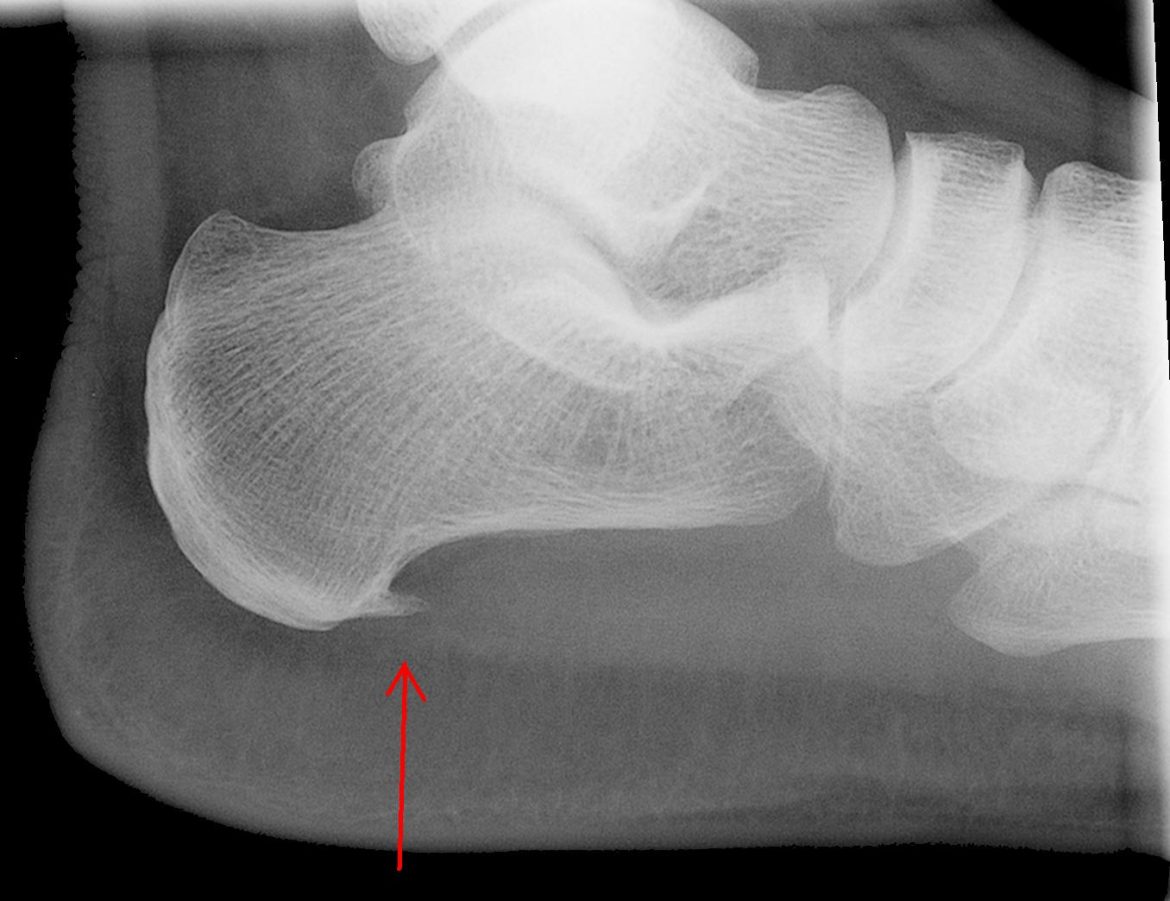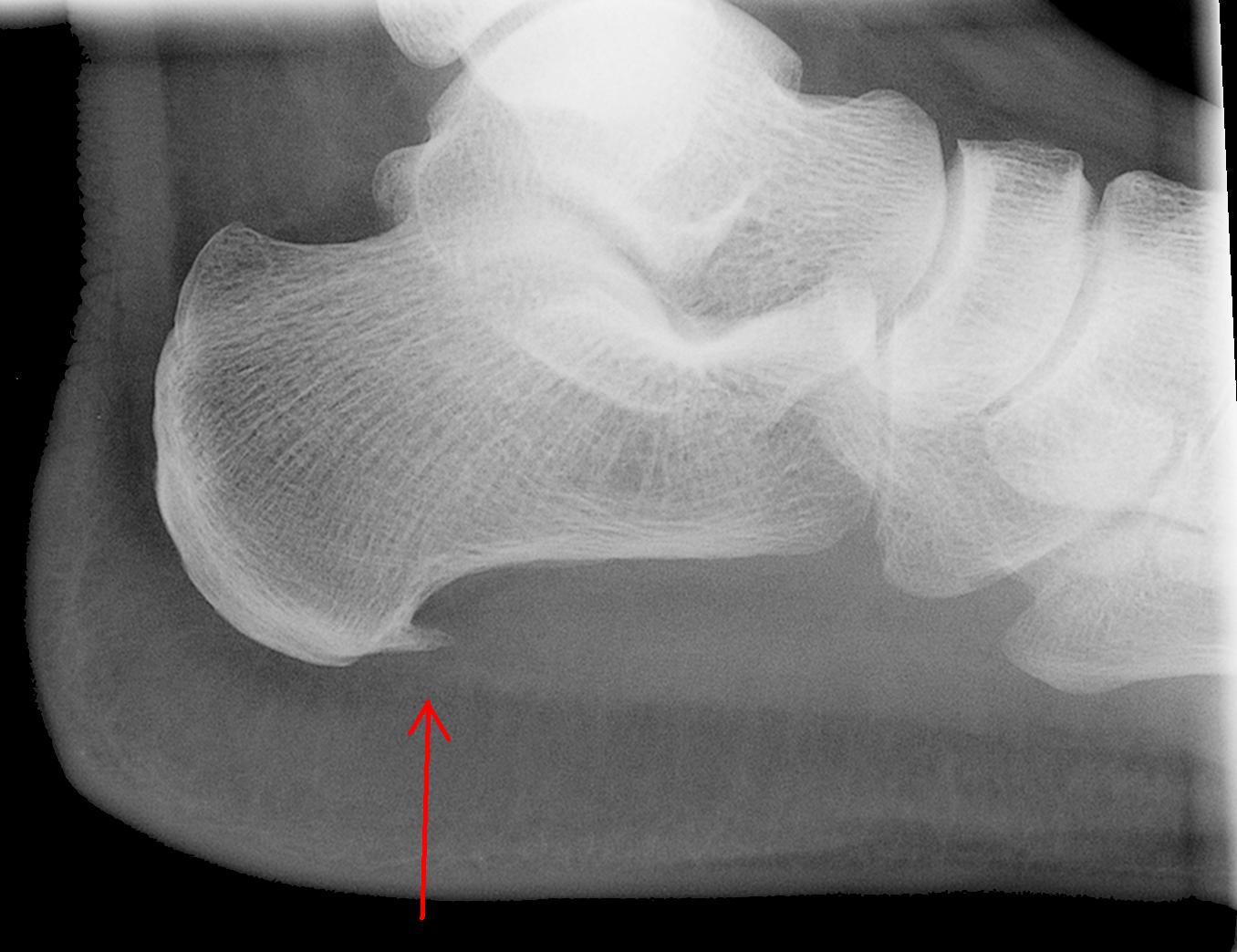Plantar fasciitis and heel spur:
Once the mechanism of plantar fasciitis is understood, the development of a heel spur is easy to understand. A heel spur is a bone spur that forms on the calcaneal tuberosity along the line of the plantar fascia (plantar aponeurosis) (proximally on the plantar side). Bone spurs are essentially created in response to excessive physical stress placed on the bone. (According to Wolff’s Law, calcium is deposited in response to physical stress.) In the case of a heel spur, the excessive stress is created by the pulling force of the plantar fascia. Each time that a tensile force is placed on the plantar fascia, usually from the foot overly pronating and dropping its arch, the plantar fascia is pulled taut, tugging at its calcaneal attachment. Therefore, the same tensile stresses that cause plantar fasciitis create the heel spur. As the plantar fascia becomes more taut in response to the forces placed on it, its pull on the calcaneus increases, furthering the formation of the heel spur. In other words, a heel spur both forms along with plantar fasciitis and is also a consequence of it.
Definitive assessment of a heel spur is done via radiographic study. A lateral view X-Ray shows the bone spur forming off the calcaneal tuberosity. Ironically, unless a heel spur is quite large, it is usually asymptomatic. Most of the pain that is blamed on a heel spur is caused by the plantar fasciitis and/or the irritation to the periosteum of the calcaneus from the taut plantar fascia. When a heel spur becomes larger, it can become symptomatic. Palpation pressure placed directly on a heel spur can elicit tenderness, and pressure from weight bearing might also increase pain. However, even in advanced cases, the plantar fascia, not the spur, still usually causes the majority of pain/tenderness at the heel.
This is not to say that a heel spur is totally blameless. Weight bearing pressure on the pointy end of a heel spur can cause it to press into the plantar fascia, further irritating that condition. In this manner, a vicious cycle occurs in which the plantar fasciitis aggravates the heel spur and the heel spur aggravates the plantar fasciitis.
There is no treatment, manual or medical that will eliminate the presence of a heel spur. Instead, treatment is oriented at alleviating the plantar fasciitis and/or tight plantar fascia that is causing the spur. Anti-inflammatory medications (oral NSAIDs or cortisone injection) are often recommended. If the heel spur is large enough to be symptomatic, wearing an orthotic with a small hole cut out where the heel spur would bear weight onto the ground can be helpful.




